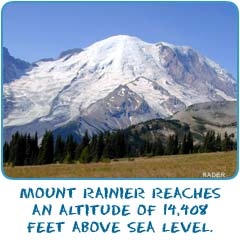Greater Than One Thousand
 You made it to one thousand pretty quickly. Good work. You have the basics down. Counting and naming numbers uses the same patterns again and again. One of the great things in math is that it is predictable. It's a little boring if you need to count to ten thousand (10,000) by ones, but it is done the same way over and over again. Always remember that once you hit a "9" and switch to a "0", the value in the column to the left will increase by one. That's the big rule of counting by ones.
You made it to one thousand pretty quickly. Good work. You have the basics down. Counting and naming numbers uses the same patterns again and again. One of the great things in math is that it is predictable. It's a little boring if you need to count to ten thousand (10,000) by ones, but it is done the same way over and over again. Always remember that once you hit a "9" and switch to a "0", the value in the column to the left will increase by one. That's the big rule of counting by ones.
So what about numbers greater than one thousand (1,000). Math likes to keep its notation and symbols nice and neat. You will soon see patterns developing. Let's look at the nice round numbers first...
1 - One
10 - Ten
100 - One hundred
1,000 - One thousand
10,000 - Ten thousand
100,000 - One hundred thousand
1,000,000 - One million
10,000,000 - Ten million
100,000,000 - One hundred million
1,000,000,000 - One billion
With so many patterns, let's start with the ONE-TEN-HUNDRED pattern. Numbers are organized by tens. Our entire number system works that way and when you learn more about the metric system, you will learn even more about tens.
Guess what the next number in the above series is. If all of the numbers move from one to ten to one hundred, what next even value would come after one billion? Tick tock tick tock.. Ten billion. Ten billion is a one with ten zeroes after it. The next number would be. One hundred billion. We'll stop there.
Do you see another pattern in that list? Take a look at the commas (,). They come after every three places. The commas make it easier to read large numbers such as millions and billions. Also, whenever you see one of those commas, you know you are reaching a new level of counting. Starting with hundreds you move to thousands, then millions, then billions. Trillions and quadrillions come next, but you won't use them often. Not all countries use commas. European countries use dots between each of the three numbers. It's a little different, but you'll see the same pattern.
Looking at the Words
We're not going to drag this out. Writing out numbers is a long process that is tedious. You will just need to practice, practice, and practice. You already know the basics and you will just add even larger numbers to the words now.Examples:
3 - Three
23 - Twenty-three
423 - Four hundred twenty-three (you could already do this)
1,423 - One thousand four hundred twenty-three (1 and 423)
7,423 - Seven thousand four hundred twenty-three (7 and 423)
37,423 - Thirty-seven thousand four hundred twenty-three (37 and 423)
637,423 - Six hundred thirty-seven thousand four hundred twenty-three (637 and 423)
5,637,423 - Five million six hundred thirty-seven thousand four hundred twenty-three (5 and 637 and 423)
Ugh. It gets a little long writing it out. You get the idea. Right? (1) Counting and naming starts over again after every comma. (2) Numbers between one (1) and ninety-nine (99) often use a dash between the numbers. (3) No commas when you write it out with words.
Once again, practice is the way to learn about naming numbers. When you move forward in math, no one is going to ask you to write out the full names of 15 digit numbers. That's why we have digits in the first place. It makes writing numbers a lot easier.
Related Activities

|
Identify Numbers to Ten Thousand (10,000) Quiz
- Play Activity |

|
"More or Less" - Comparing Numbers to Ten Thousand (10,000) Quiz
- Play Activity |
Useful Reference Materials
Wikipedia:https://en.wikipedia.org/wiki/Pre-algebra
Encyclopædia Britannica:
http://www.britannica.com/topic/mathematics
College of the Redwoods:
http://mathrev.redwoods.edu/PreAlgText/





